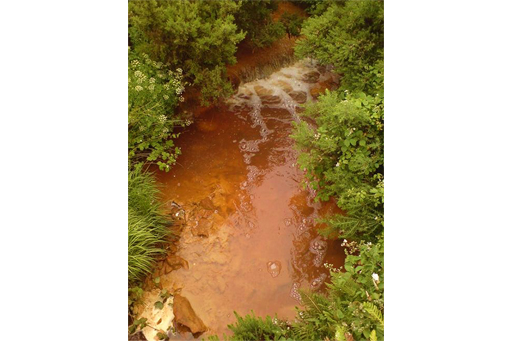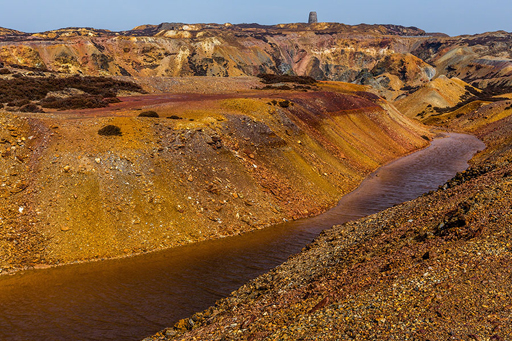4.13 Toxic waters escape, but toxic conditions remain
Just as it has mobilised and deposited the iron over the opencast site, the acidic water can also dissolve and move elements off the site of the mine and into the wider environment. It is this Acid Mine Drainage (AMD) which can cause a lot of problems, concentrating and releasing potentially toxic elements like iron, lead, manganese and arsenic away from the containment of the mine.
The stream in Figure 4.13 runs through the village of Amlwch near to the Parys Mountain mine. The red colouration in the bed of the stream is due to the iron, which the acidic waters have allowed to leave the opencast.
As well as allowing toxicity to leave the mine site, the acidic conditions and toxic metals that remain within a mine site also cause problems for biology within the mine. The opencast has been out of use for many years, but little vegetation has grown back over the spoil heaps – that’s largely because very little can grow in the acidic, toxic conditions left behind.


